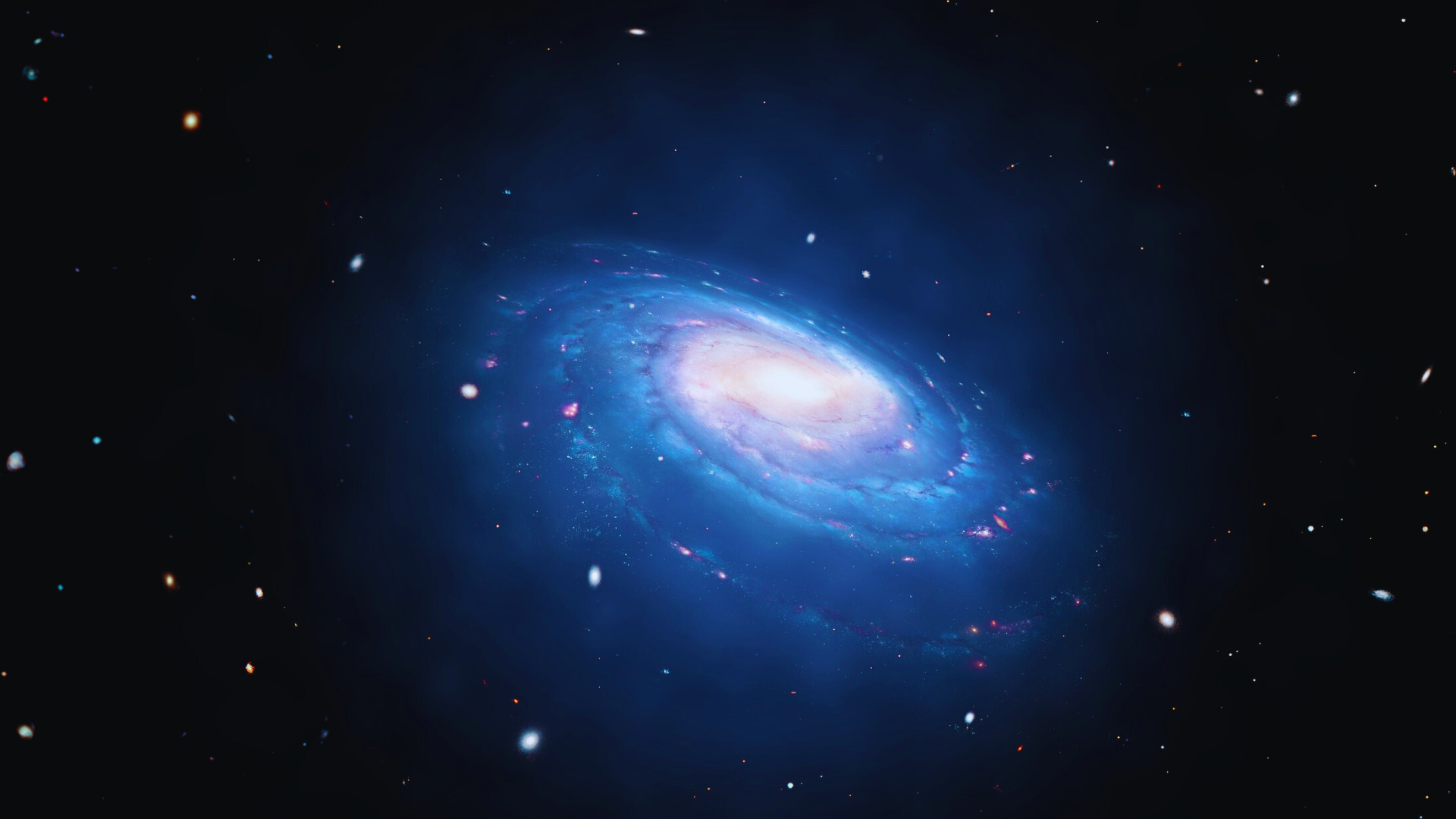Dark matter remains one of the universe’s greatest mysteries, capturing the fascination of scientists and enthusiasts alike. This elusive substance makes up about 27% of the universe, yet it cannot be seen directly; its presence is inferred through the gravitational effects it exerts on visible matter. Understanding dark matter is crucial for comprehending the overall structure and evolution of the cosmos.
As researchers continue to explore the properties and implications of dark matter, they uncover insights that challenge existing theories of physics. This pursuit reveals not only the complexity of the universe but also the limitations of current scientific knowledge. The ongoing investigation into dark matter may ultimately reshape our understanding of reality itself.
Engaging with the truth about dark matter invites readers to consider their own place in the cosmos and the hidden forces that govern it. The intersection of dark matter and the visible universe offers a profound glimpse into the fundamental nature of existence.
What Is Dark Matter?
Dark matter refers to a type of matter that does not emit, absorb, or reflect light, making it invisible and detectable only through its gravitational effects. It plays a crucial role in the structure and evolution of the universe, contrasting sharply with normal or baryonic matter, which constitutes stars, planets, and other visible structures.
The Nature of Dark Matter
Dark matter is believed to make up approximately 27% of the universe’s total mass-energy content. Unlike ordinary matter, which is composed of atoms and subatomic particles, dark matter does not interact via electromagnetic forces. This means it does not form atoms and cannot be detected directly with current instruments.
Theories suggest dark matter may consist of weakly interacting massive particles (WIMPs) or other exotic candidates proposed in extensions of the standard model of particle physics. Observations, including galaxy rotation curves and cosmic microwave background radiation, provide strong evidence for its existence, although dark matter remains elusive.
Visible Matter vs. Dark Matter
Visible matter, or ordinary matter, accounts for about 5% of the universe and includes everything from stars to gas clouds. This baryonic matter interacts with electromagnetic forces, allowing it to emit light and other forms of radiation.
In contrast, the presence of dark matter is inferred from gravitational effects on visible matter. For example, galaxy rotation curves reveal that stars at the edges of galaxies rotate faster than expected based solely on visible mass. This discrepancy indicates that a significant amount of unseen mass exists, reinforcing the need to understand dark matter’s properties further.
A Fundamental Ingredient in the Universe
Dark matter is a fundamental ingredient that helps shape the cosmic structure. It acts as a scaffold, guiding the formation of galaxies and galaxy clusters. Without dark matter, current cosmological models would struggle to explain the observed large-scale structures in the universe.
In simulations, areas rich in dark matter attract baryonic matter, allowing galaxies to form in denser regions. Understanding dark matter is essential to comprehend the universe’s history and ultimate fate, revealing deeper insights into its composition and dynamics.
Evidence Supporting Dark Matter
Various lines of evidence support the existence of dark matter. These include observations from galaxy rotation curves, gravitational lensing, and behavior within galaxy clusters. Each piece collectively strengthens the case for dark matter as a crucial component of the universe.
Galaxy Rotation Curves
Studies of galaxy rotation curves provide compelling evidence of dark matter. When astronomers measure the rotation of galaxies, they observe that stars at the edges rotate at similar speeds to those closer to the center. This flat rotation curve contradicts predictions based solely on visible matter.
The expected decrease in rotational speeds occurs due to gravitational pull from visible mass, but the reality indicates additional unseen mass. This discrepancy suggests the presence of dark matter, which contributes to gravitational effects that extend beyond the observable parts of the galaxies.
Gravitational Lensing and Cosmic Microwave Background
Gravitational lensing occurs when massive objects bend light from background sources. Observations of this effect demonstrate that the mass of galaxy clusters, such as the Coma cluster, exceeds that of their visible matter.
Additionally, the Cosmic Microwave Background (CMB) radiation provides insights into the universe’s early conditions. Variations in the CMB indicate the presence of dark matter influencing the large-scale structure of the cosmos. Astronomical observations of lensing effects and the CMB support mainstream theories on dark matter’s role in structure formation.
Galaxy Clusters and Large-Scale Structure
Galaxy clusters are the largest gravitationally bound structures in the universe. They serve as critical testing grounds for dark matter predictions. Observations of clusters, like the Bullet Cluster, show discrepancies between the distribution of visible mass and gravitational effects.
In the Bullet Cluster, two colliding clusters reveal that visible matter (in the form of hot gas) and the gravitational effects (attributed to dark matter) are separated. The observable gas is less massive than the total inferred mass based on gravitational pull, indicating that dark matter is necessary to account for the observed structure.
The Bullet Cluster and Other Observational Evidence
The Bullet Cluster presents perhaps the most striking evidence for dark matter. It consists of two galaxy clusters that have collided, allowing for a clear distinction between visible and invisible mass.
Gravitational lensing in this scenario illustrates the presence of dark matter, as the mass estimated from lensing effects significantly outweighs the mass of the visible matter. Other observational evidence includes studies of superclusters and their distribution, which aligns with predictions that include dark matter as part of cosmic scaffolding.
These lines of evidence converge to reinforce the hypothesis that dark matter is an essential component in understanding the universe’s structure and dynamics.
Theoretical Models and Candidates for Dark Matter
Research into dark matter has produced various theoretical models and candidates that seek to explain its elusive nature. These models include particle candidates and alternative theories of gravity, each contributing to the understanding of dark matter’s role in the universe.
Particle Dark Matter: WIMPs, Axions, and More
Particle dark matter consists of hypothetical particles that do not emit light or energy, making them invisible. Weakly Interacting Massive Particles (WIMPs) are among the most studied candidates. They are predicted to have masses between 10 GeV and 1 TeV, and interact through the weak nuclear force, making their detection challenging.
Another significant candidate is the axion, a hypothetical particle proposed to address the strong CP problem in quantum chromodynamics. Axions are much lighter than WIMPs and could exist in abundance, potentially providing a solution to the nature of dark matter. Other candidates include gravitinos and superpartners, which arise in theories like supersymmetry.
Hot, Cold, and Sterile Neutrinos
Dark matter candidates can also be categorized by their thermal properties: hot, cold, or warm. Hot dark matter includes relativistic particles like neutrinos, which travel close to the speed of light. Their high velocity affects the structure formation of the universe.
Cold dark matter, on the other hand, consists of non-relativistic particles, allowing for the clumping necessary for galaxy formation. Sterile neutrinos are a theoretical type of neutrino that interacts only via gravity, making them a potential dark matter candidate. The balance between hot and cold dark matter influences models of early universe evolution and the distribution of galaxies.
Modified Gravity Theories
Alternative approaches to understanding dark matter involve theories of modified gravity. These theories suggest that the gravitational laws differ from the predictions of general relativity under certain conditions. One notable example is Modified Newtonian Dynamics (MOND), which proposes that the effects attributed to dark matter arise from changes in gravitational force at low accelerations.
Such models aim to eliminate the need for dark matter while explaining observed galactic rotation curves. While compelling, modified gravity theories remain subjects of debate, requiring extensive observational data to confirm or refute their validity in explaining dark matter phenomena.
Frontiers and Challenges in Dark Matter Research
Dark matter research encompasses various major experiments and historical milestones. The exploration of alternative hypotheses and ongoing controversies adds complexity to the field. Each aspect plays a crucial role in understanding dark matter’s influence on the universe.
Major Experiments and Observations
Significant advancements in dark matter research stem from both terrestrial and astronomical experiments. The Large Hadron Collider (LHC) at CERN seeks new particles that could explain dark matter through high-energy collisions. Projects like XENON1T employ ultra-sensitive detectors to measure potential dark matter interactions, aiming to capture rare events involving dark matter particles.
Observations from the James Webb Space Telescope contribute to understanding galaxy formation, revealing the gravitational effects of dark matter on visible matter across the observable universe. Studies of temperature imperfections in the cosmic microwave background illuminate conditions from the Big Bang, providing insights into the early universe when dark matter began influencing structure formation.
Historical Figures and Milestones
The history of dark matter is marked by key figures and milestones. Fritz Zwicky first proposed the existence of dark matter in the 1930s after observing galaxy clusters and their dynamics. His work laid the foundation for later research, despite initial skepticism.
In the 1970s, Vera Rubin and Kent Ford conducted pioneering studies on spiral galaxies. Their observations revealed that visible matter alone could not explain the rotational speeds of these galaxies, reinforcing Zwicky’s hypothesis. This significant milestone further propelled cosmology into the modern era, establishing the critical need to explore and understand dark matter’s role.
Alternative Hypotheses and Controversies
Debates over the nature of dark matter encompass alternative hypotheses and controversies that challenge established views. Some propose fringe theories, like modified gravity, questioning whether dark matter is necessary to explain cosmic phenomena. Skeptics often raise concerns regarding false equivalencies in arguments against the dark matter hypothesis, alleging disingenuous arguments that complicate scientific discourse.
Additionally, the implications of dark energy and its relationship to dark matter spark further examination. The interplay of fundamental forces in the absence of visible matter remains a crucial area for exploration, given its potential to reshape understanding of the universe’s expansion and structure.



